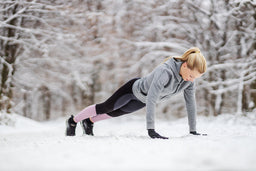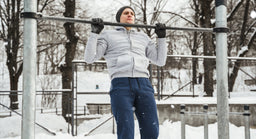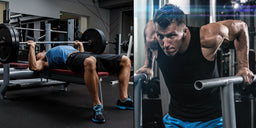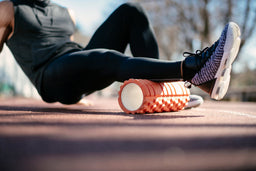
How To Build True Functional Fitness
We’re big fans of any form of training. But if you really want to know where our hearts lie, it’s functional training. Functional fitness is the definition of training for life. Here’s how to train for functional fitness and all-round wellness.
What is functional fitness?
The term gets thrown around a lot – but what does it actually mean? Functional training means getting your body strong and capable across a range of movements to make daily activities easier.
Functional fitness makes you stronger and more flexible for things like carrying heavy stuff at home, doing garden projects, lifting your kids, going for long walks, and getting up off the floor without discomfort.
It might not be the sexiest side of fitness, but it’s hugely empowering. (And you’ll probably end up being the sexiest octogenarian in your town!)
How to train for functional fitness
Functional training puts your body through real-world movements like squatting, pulling, dragging things, pushing stuff, climbing, using one arm or one leg to do things, and moving quickly. Think pull ups, not lat pull downs, and pistol squats not leg extensions machines.
Functional fitness programming combines compound exercises with conditioning work, calisthenics, and gymnastics-based movements to challenge your body through different planes of movement.
Free weights vs machines
It’s this real-world application that steers us away from gym machines and towards free weights and odd objects in functional training. A good functional fitness gym like the Gravity Academy won’t have many machines. At most, you should expect to find useful kit like a reverse hyper.
Instead, you’ll get to train with a variety of weighted objects (kettlebells, med balls and slam balls, dumbbells, bars and plates) plus equipment that turns your own body into the resistance tool (rig, pull up bar, gymnastics rings, parallettes). You see the difference?
Functional fitness programming
Forget body part splits. As a functional fitness athlete, you won’t be training chest on a Monday. Every day will be leg day, pull day, and overhead press day. Your sessions might be short, but you’ll get a full body workout (plus conditioning) each time you train.
Mobility training
The other key difference between functional training and bodybuilding gym work is the focus on movement. Calisthenics and functional fitness athletes spend time working on mobility and range of movement. It’s not a once-a-week thing or a Sunday yoga class. Mobility work is a daily practice of working through joints and fascia to support movement and recovery.
9 best functional fitness exercises
1 Squats – branch out from basic barbell back squats and add squat variations into your functional training. Front squats, goblet squats, and air squats are all central to functional fitness.
2 Hip hinge – the deadlift is the most common hip hinge movement, but you should also do kettlebell swings and other more dynamic hip hinge exercises.
3 Open/close movements – do exercises that take you from a closed to an open position, like wall ball throws and thrusters.
4 Overhead pressing – this doesn’t have to be a static press with a barbell. Overhead press work can also be done with dumbbells, or as part of a larger movement like a clean or push press.
5 Loaded carries – picking up weight and walking with it is one of the most functional movements going. Use Farmers Walk handles, two heavy kettlebells, or odd objects like a sandbag.
6 Walking lunges – moving whilst lunging is infinitely preferable to static lunges. You can do walking lunges with bodyweight only, or add weight in one hand (to challenge balance) or even overhead.
7 Crawls – bear crawls and other ground-level movements are a challenging functional movement with a ton of benefits for strength, core, flexibility and mobility.
8 Step ups – a plyo box is a great functional fitness tool. Use it for step ups, weight step ups, step overs, box jumps, box overs. All these build strength, power, balance, and co-ordination.
9 Pull ups – rig work is at the heart of functional training. Work through pull ups and pull up regressions or variations, muscle ups, static holds, leg raises and much more.
Do you train for function over aesthetics? Join the Gravity Fitness Tribe Facebook community for training tips, free programming, coaching Q&A and more.
































